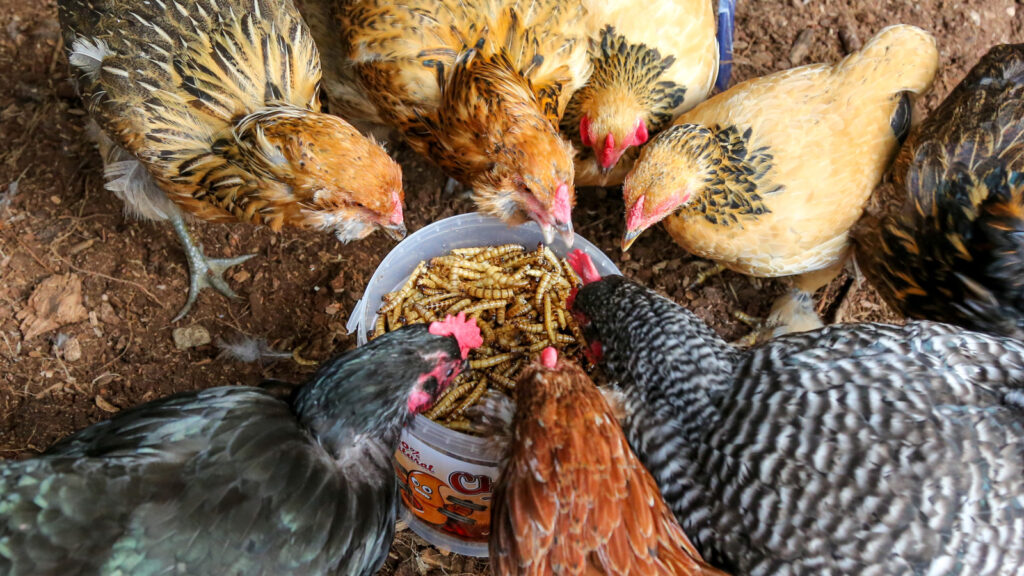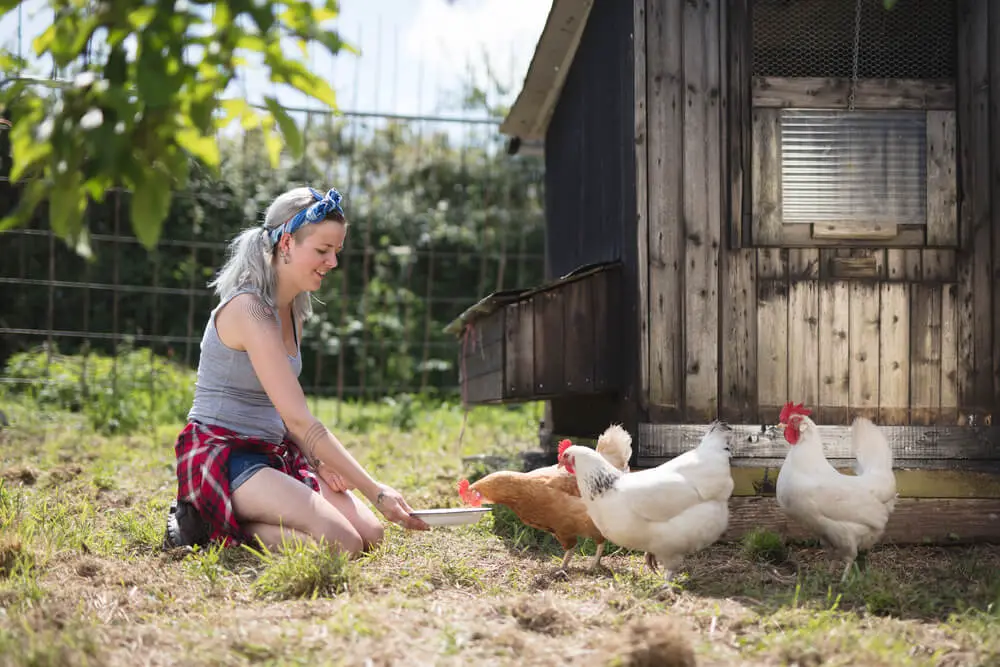Raising mealworms is a cost-effective and easy way to provide high-quality chicken feed. Chickens need a balanced diet that includes protein, and mealworms are a great source of this essential nutrient.
In this article, we will discuss the benefits of raising mealworms, how to get started, and how to incorporate mealworms into your chickens’ diet.
Why raise mealworms for chicken feed?
There are several benefits to raising mealworms for chicken feed. First, mealworms are an excellent source of protein, which is an essential component of a chicken’s diet. Chickens need protein to build and repair muscles, produce eggs, and maintain overall health. Feeding mealworms to chickens can also help to reduce feed costs, as commercial chicken feed can be expensive.
Another advantage of raising mealworms is that they are relatively easy to care for. They do not require a lot of space or special equipment, and they can be raised indoors or outdoors. Additionally, mealworms can be stored for an extended period, so you can have a steady supply of chicken feed throughout the year.
Getting started with raising mealworms:

To get started with raising mealworms, you will need a container, substrate, and mealworms. The container can be any size, but it should have smooth sides and a lid to prevent escape. Plastic storage containers or aquariums are good options.
The substrate is the material that the mealworms live in. Oatmeal, wheat bran, or chicken feed can be used as substrate. Spread a layer of substrate on the bottom of the container.
Next, add the mealworms to the container. You can purchase mealworms from a pet store or online. Start with a small number of mealworms, and they will multiply quickly.
Caring for mealworms:
Mealworms require a few basic needs to thrive. They need to be kept in a warm, dry, and dark environment. The ideal temperature for mealworms is between 70 and 80 degrees Fahrenheit. The humidity level should be around 70 percent. You can use a heat lamp or a heating pad to keep the container warm.
Feeding the mealworms is also important. Mealworms can eat a variety of foods, including vegetables, fruits, and grains. They also need a source of moisture, which can be provided by adding pieces of potato or carrot to the container.
Be sure to remove any uneaten food to prevent mold growth.
Cleaning the container regularly is also essential. Remove any dead mealworms or waste from the substrate and replace it as needed. This will prevent the growth of harmful bacteria and ensure that the mealworms stay healthy.
Harvesting mealworms:
Mealworms take several weeks to grow and develop into pupae, which can then be harvested. Signs that mealworms are ready for harvesting include the appearance of the pupae and a decrease in the number of mealworms in the container.
To harvest the mealworms, separate them from the substrate by sifting it through a mesh screen. The pupae can be collected and allowed to develop into beetles, which can then lay eggs and start the process again. The harvested mealworms can be stored in the refrigerator or freezer until they are ready to be fed to the chickens.
Feeding mealworms to chickens:

Feeding mealworms to chickens is an excellent way to supplement their diet with protein. Chickens can be fed mealworms as a treat or added to their regular feed. Start by offering small amounts of mealworms and gradually increasing the amount over time.
While mealworms are a great source of protein, they should not make up the majority of a chicken’s diet. It is essential to provide a balanced diet that includes grains, vegetables, and fruits. Overfeeding mealworms can also lead to obesity and other health problems, so it is important to feed them in moderation.
Conclusion:
Raising mealworms is an easy and cost-effective way to provide high-quality chicken feed. By following a few simple steps, you can have a steady supply of mealworms that will keep your chickens healthy and happy. With a little effort, you can create a sustainable source of protein that will benefit both your chickens and your wallet.
FAQs:
- How long does it take to raise mealworms for chicken feed? It takes about six weeks for mealworms to develop from larvae to pupae and be ready for harvesting.
- What can I use as a substrate for mealworms? Oatmeal, wheat bran, or chicken feed can be used as substrate.
- Can I raise mealworms without a container? While a container is the most common way to raise mealworms, they can also be raised in a shallow tray or even in a compost pile.
- Can mealworms be harmful to chickens? Mealworms are generally safe for chickens to eat. However, it is essential to feed them in moderation and provide a balanced diet.
- How many mealworms should I feed my chickens? Start by offering a small amount of mealworms and gradually increasing the amount over time. It is essential to provide a balanced diet that includes grains, vegetables, and fruits.

Shannon Stansberry has been engaged in the business of raising chickens for more than 12 years. In 2016, she accomplished the Agriculture & Natural Resources program at Mt. San Antonio College. At present, she tends to more than 80 chickens on her 4-hectare farm. Shannon regularly shares her insights and experience on how to raise healthy and contented chickens on the platform Typesofchickens.com
